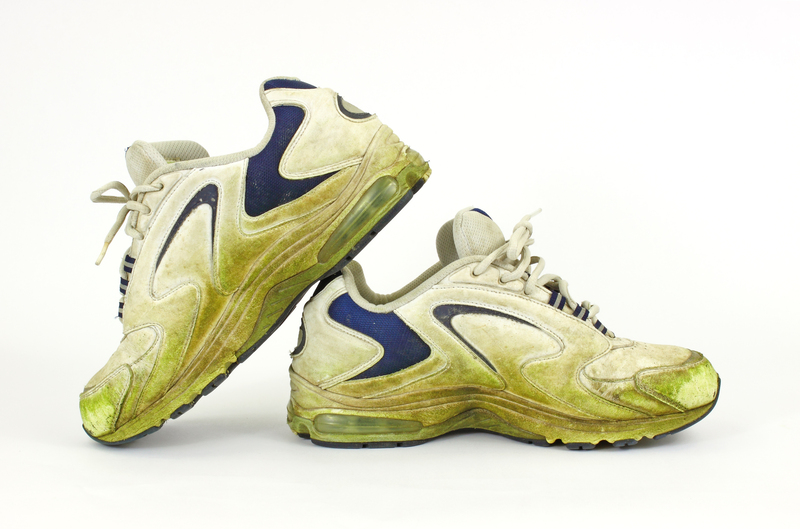Essential Guide to Cleaning Curtains with Expertise
Posted on 18/08/2025
Essential Guide to Cleaning Curtains with Expertise
When it comes to home maintenance, cleaning curtains is a task that's often overlooked. Yet, curtains are magnets for dust, pet hair, mold spores, and airborne pollutants, making regular maintenance crucial for a healthy home. In this expert guide to cleaning curtains, we'll explore proven techniques, pro tips, and care instructions to keep your window treatments spotless, fresh, and long lasting.

Why Cleaning Your Curtains Is Important
Your curtains are more than just decorative pieces. They filter sunlight, trap dust, insulate rooms, and provide privacy. Neglecting proper cleaning can lead to:
- Accumulation of dust and allergens leading to poor indoor air quality
- Faded colors and fabric deterioration from dirt and sunlight exposure
- Stubborn stains and unpleasant odors that diminish room ambiance
- Mold and mildew growth in humid environments
Regular curtain cleaning not only improves your home's aesthetics but also boosts your family's health.
Understanding Curtain Fabrics and Cleaning Methods
Different curtain materials require specialized cleaning methods. Identifying your curtain fabric is the first step to proper care:
- Cotton: Durable and often machine washable.
- Linen: Lightweight, may shrink--gentle handwash or dry clean.
- Silk: Delicate--dry clean only.
- Velvet: Requires vacuuming and occasional dry cleaning.
- Polyester: Easy-care, usually machine washable.
- Sheer and Lace: Ultra-delicate, handwash recommended.
Pro Tip: Always check the manufacturer's care label for the safest cleaning instructions before proceeding.
How Often Should You Clean Your Curtains?
- Light dusting & vacuuming: Weekly or biweekly, depending on location and exposure.
- Deep cleaning: Every 3-6 months, or sooner in high-traffic or high-humidity rooms.
- Stain removal: As soon as a spill occurs to prevent setting.
Note: Households with allergies, pets, or heavy traffic may require more frequent cleaning.
Pre-Cleaning Steps: Preparing for Success
- Read the label: Identify any special instructions or fabric restrictions.
- Test for colorfastness: Dab a hidden spot with water and mild detergent; blot with white cloth.
- Remove hooks, rings, or detachable weights: Prevents damage during washing.
- Shake outside: Remove any loose dust and debris.
Routine Curtain Cleaning Methods
1. Vacuuming Curtains
Vacuuming is essential for regular curtain maintenance:
- Use a brush or upholstery attachment.
- Start from the top and work your way down.
- Focus on pleats, seams, and edges where dust accumulates.
- Frequency: Weekly for homes with pets or lots of dust.
2. Steam Cleaning Curtains
Steam cleaning provides a quick, effective way to refresh heavy or hard-to-remove drapes:
- Use a handheld fabric steamer.
- Hold the steamer 6 inches from the fabric; move in downward strokes.
- For stubborn creases or odors, repeat as needed.
- Curtains can remain hanging during this process.
Note: Avoid steam cleaning silk or delicate synthetic fabrics.
3. Spot Cleaning Curtains
For stains or marks, spot cleaning is the most practical approach:
- Blot stains gently--do not rub.
- Use a solution of mild detergent and water.
- Test a hidden area first to check for discoloration.
- For tougher stains, consider specialized stain removers suited for your curtain fabric.
Deep Cleaning: Washing Your Curtains
1. Hand Washing Curtains
- Fill a large tub with lukewarm water and gentle detergent.
- Soak curtains for 10-15 minutes, swish gently to loosen dirt.
- Rinse thoroughly in cool water.
- Do not wring to avoid creases--gently squeeze excess water.
2. Machine Washing Curtains
- Select a gentle cycle and cold water.
- Place curtains in a mesh bag for protection.
- Use mild detergent; avoid bleach or harsh chemicals.
- Remove promptly after washing to prevent wrinkles.
3. Dry Cleaning Curtains
Dry cleaning is essential for silk, velvet, or lined curtains:
- Take curtains to a professional dry cleaner with experience in drapery fabrics.
- Point out any stains or special features, like pleating or embellishments.
- Dry clean only if the care label explicitly recommends it.
Drying and Rehanging Curtains Correctly
- Air drying: Best for most fabrics. Hang curtains on a line or shower rod in a well-ventilated area away from direct sunlight.
- Machine drying: Use only if permitted by the care label. Choose a no-heat or low-heat setting.
- Ironing: While slightly damp, iron on the recommended setting to remove creases.
- Rehang while damp: For heavier curtains, this can help them regain natural shape and drape, letting gravity do the work.
Professional Curtain Cleaning Services: When to Choose Experts
Sometimes, expert curtain cleaning services are the safest choice, particularly for:
- Valuable fabrics like silk, velvet, or delicately embroidered drapes.
- Heavily soiled or moldy curtains.
- Large, unwieldy, or custom-fitted curtains you can't easily remove.
- If the care label suggests professional cleaning only.
Look for companies with experience and top reviews. Request details on their cleaning process and ensure they use gentle, non-toxic solutions safe for your household.
Special Curtain Types: Tips for Unique Fabrics
1. Sheer Curtains and Voiles
- Hand wash with mild detergent, rinse thoroughly, avoid wringing.
- Lay flat or hang to air dry; avoid tumble driers.
2. Blackout Curtains
- Spot clean stains promptly with a damp cloth.
- Some may be machine washable; others require dry cleaning--always check the manufacturer's guide.
3. Thermal or Insulated Curtains
- Use a vacuum for regular dust removal.
- Never immerse the insulated backing in water--spot clean only.
Maintaining Curtain Freshness: Proactive Tips
- Regular airing: Open windows and doors occasionally to freshen fabrics.
- Minimize direct sunlight exposure: Prevents fading--consider blinds behind curtains or tiebacks to reduce light contact.
- Use a lint roller: For pet hair or debris on heavy fabrics.
- Spritz with a fabric refresher: Lightly mist with a gentle, non-toxic spray between deep cleans.
Common Mistakes to Avoid
- Skipping the care label: Always read before attempting new cleaning methods.
- Overloading the washing machine: Can cause creasing, tearing, and incomplete washing.
- Using bleach without checking: Some fabrics are easily discolored by harsh chemicals.
- Rehanging curtains while too wet: May stretch fabric or cause dye transfer.

FAQs About Cleaning Curtains
Can You Wash Curtains With Metal Rings?
Yes, but remove detachable metal rings when possible to avoid rusting. If the rings are sewn-in, place curtains in a mesh laundry bag to protect your washer and the fabric.
What's the Best Way to Remove Pet Hair From Curtains?
Use a vacuum with an upholstery brush, or a lint roller for stubborn hair. Dry sponges can also help lift pet hair from fabric surfaces.
How Can I Prevent Mould on Curtains?
Keep rooms well-ventilated and clean curtains regularly. Use a dehumidifier in humid climates and avoid letting wet curtains remain unwashed.
Is Fabric Softener Recommended for Curtains?
It depends on the fabric. Softener may leave residue or affect flame-retardant coatings, so always check the care label before use.
Conclusion: Expert Cleaning for Lasting Elegance
Maintaining pristine curtains isn't just about appearance--it's vital for air quality, longevity, and the comfort of your living spaces. With this essential guide to expert curtain cleaning, you now have the know-how to match the right method to your curtain's unique fabric and style. Regular upkeep, gentle cleaning techniques, and an understanding of your curtain's needs will keep them looking beautiful and performing perfectly for years to come.
Invest in the right care today, and enjoy fresh, clean curtains that enhance your home every day!



